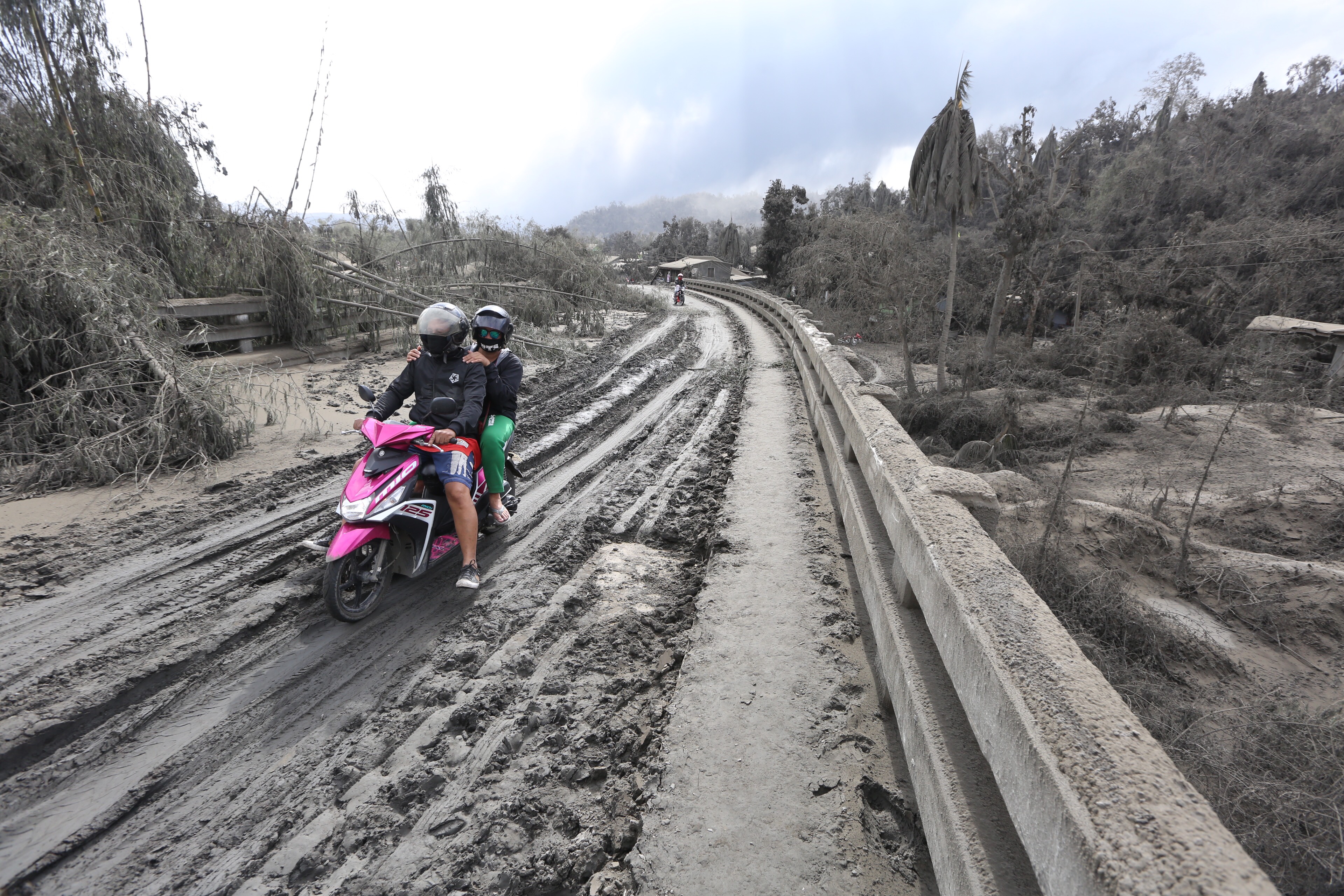Eruption takes heavy toll on Batangas folk

TEMPORARY SHELTER Residents fleeing from the eruption of Taal Volcano take shelter in a covered court in Sta. Teresita town, Batangas province. Vice President Leni Robredo visited the evacuees on Tuesday afternoon to check on their condition and to distribute relief goods. —NIÑO JESUS ORBETA
LAUREL, Batangas, Philippines — Farmer-turned-mechanic Terry Rodriguez, 55, was fixing his motorcycle when Taal Volcano started spewing ash and steam on Sunday afternoon, creating panic that engulfed his neighborhood at Barangay Buso-Buso here.
Parents carried their crying children, calling out on everyone to flee to safer grounds, as the ground repeatedly shook and the sky turned dark, with dark gray ashes billowing out from the direction of Binintiang Munti, one of Taal Volcano’s peaks.
The Rodriguezes took shelter in a friend’s house in Santo Tomas City, as volcanic ash blanketed Laurel and its neighboring towns for the next two days.
Terry and his brother, Jessie, rode their motorcycles and returned to Buso-Buso on Tuesday morning to check on the extent of Taal’s eruption. Seeing their shop flattened by the weight of ash, their hearts sank.
“My brother and I can’t help but cry. It was a painful sight,” he said.
Article continues after this advertisementBut the Rodriguezes said they were still thankful that they have survived the wrath of the volcano.
Article continues after this advertisement“We can still rebuild this. It may cost a lot, but I have high hopes we can do it,” Terry said.
While the impact of Taal’s eruption was felt by residents from all walks of life, the toll seems to be heaviest among poorer families here whose day-to-day livelihood was disrupted as the volcano continues its rumbling for the third straight day.
Fishermen like 73-year-old Julian Valencia of Balakilong village, who has spent more than three decades relying on catch from Taal Lake, feared the continuing rumbling of the volcano would kill the fish as well as his family’s livelihood.
“We pray that [this violent volcanic activity] will soon stop; it will be difficult for us to bounce back if we get hit by a fish kill,” he said, as he picked up a dead “bangus” (milkfish) washed ashore on Tuesday morning.
“The water is fine, so far; these dead fish are just those disoriented by the seabed shaking,”he added.

ASH HIGHWAY Laurel town in Batangas province is among the towns covered with a thick layer of ash spewed by Taal Volcano, prompting residents to use motorcycles to navigate slippery roads. —NIÑO JESUS ORBETA
But the eruption did not stop fish traders of this town, like couple Nanag and Janine Balba, who took the opportunity to resume their trade in Mendez town in Cavite province, where they were evacuated.
“There was great demand for fish at the evacuation center; I was mobbed like a celebrity,” Janine said.
In Talisay town, one of the hardest hit by Taal’s ashfall, work disruption is also painful for truck driver Cerilo Canlubo, 41, of Banadero village, as well as his neighbor, Rufo Olaes, 64, a butcher at the town market.
Home, road damage
“The reason we almost never took a break from work is because we were earning barely enough. And then this happened,” Canlubo said.
While other Batangas residents’ livelihood took the hardest hit, countless others lost their homes from the ongoing eruption.
In Lemery town, Paulina Salazar, will start looking for another area to relocate after fissures, measuring a foot wide, from Taal’s rumblings damaged her family’s house of 54 years, as well as those in Barangay Sinisian East.
“Back when this house was still a hut, we have been told of tales about living on a fault line and while tiny cracks used to appear on the ground, these eventually healed. This time, the damage may no longer be repaired,” Salazar, a mother of six, said.
The intermittent quakes have caused cracks on the national highway in Lemery, Calaca and Santa Teresita towns.
But the Department of Public Works and Highways (DPWH) on Tuesday said all national roads in Calabarzon (Cavite, Laguna, Batangas, Rizal and Quezon) region were passable.
The DPWH said it was assessing road conditions following a series of quakes related to Taal’s activity.—With a report from Krixia Subingsubing